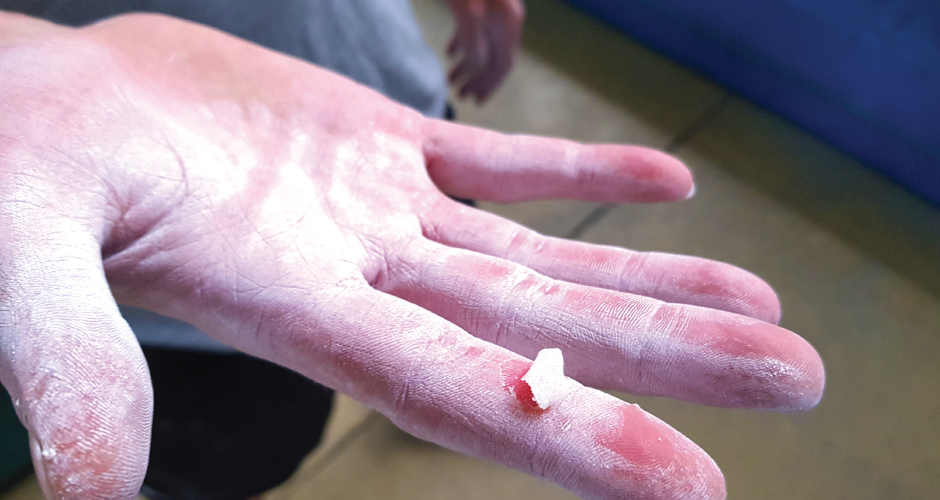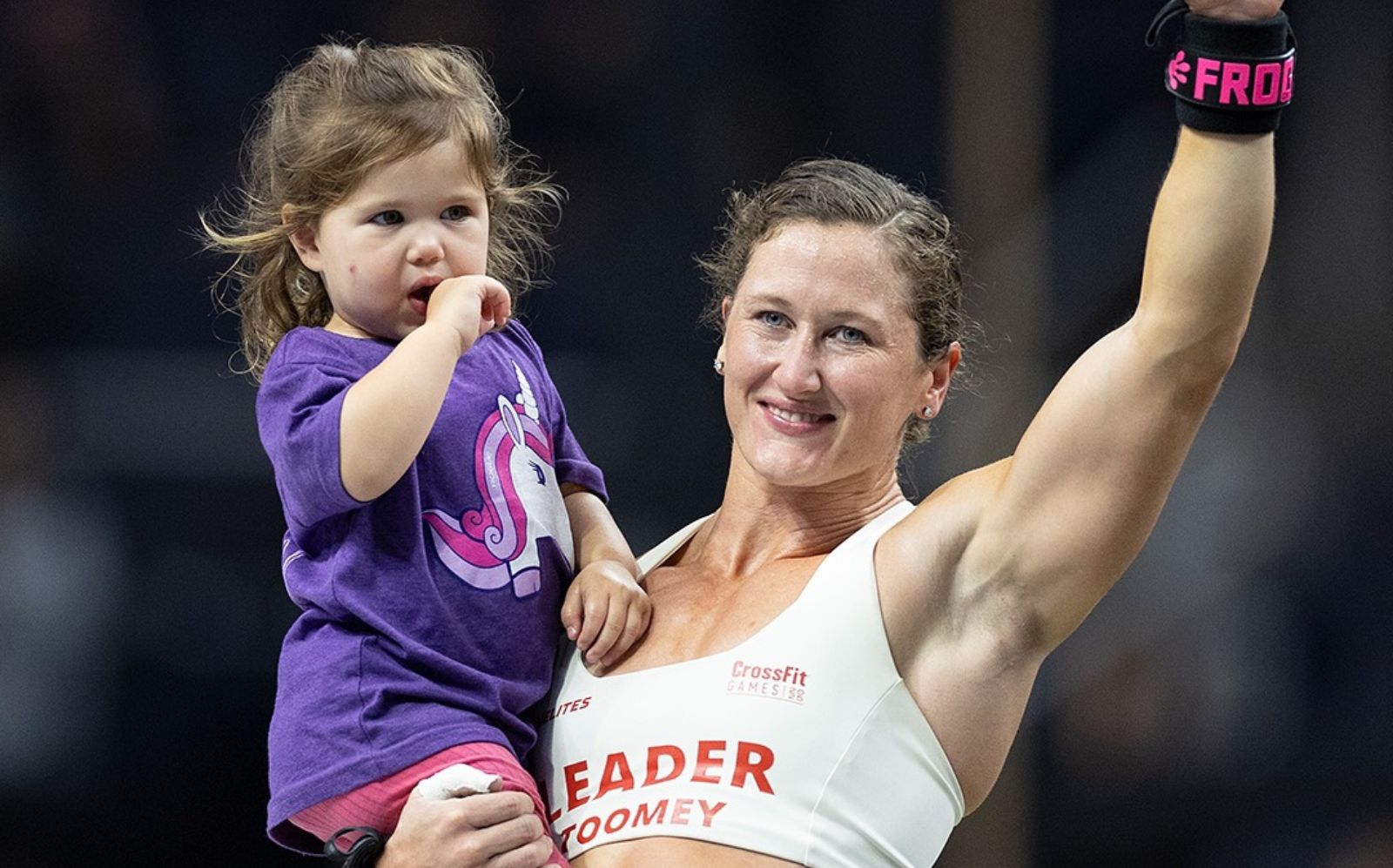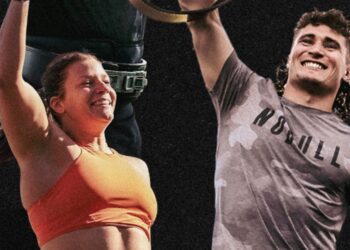Bar muscle ups (BMU) are a great way to develop and display upper body strength, power, and coordination. Popular in CrossFit, and a variation of a staple move in gymnastics, the BMU combines and overhand pull-up with a straight bar dip. These two moves flow seamlessly together so that you go from hanging below the bar to balancing on straight arms in one smooth movement.
This is what a BMU should look like:
Needless to say, such a complex exercise is not easy to learn, but that doesn’t mean it’s impossible. However, before you even think about learning the BMU, there are a couple of prerequisites.
If you CAN’T do the following, you AREN’T ready to try bar muscle ups:
- 10 full, strict pull-ups
- 10 straight bar dips
- 5 sternum-to-bar pull-ups
If these feats of strength are beyond you right now, keep training until you can do them. Only then will you be ready for the BMU. If you are impatient and try bar muscle ups before achieving these prerequisites, your chances of success are very low, and your risk of injury is much higher.
Muscles Worked
Bar muscle ups work virtually every muscle in your upper body and midsection. They are basically the upper body version of the squat! That said, it’s possible to identify the primary muscles involved in BMU, which are:
Latissimus dorsi – this is the large wing-shaped muscle of your upper back. Its main functions are adduction and extension of your upper arm.
Level Up Your Fitness: Join our 💪 strong community in Fitness Volt Newsletter. Get daily inspiration, expert-backed workouts, nutrition tips, the latest in strength sports, and the support you need to reach your goals. Subscribe for free!
Biceps brachii – the muscles on the front of your upper arms, which are responsible for flexing your elbows.
Trapezius – the large diamond-shaped muscle located across your mid-upper back, the traps are responsible for shoulder girdle retraction, depression, and elevation.
Rhomboids – the small muscles located between your shoulder blades that work with your mid-traps to retract your shoulder girdle.
Deltoids – the shoulder muscles that are responsible for shoulder flexion (anterior head), abduction (medial head), and extension (posterior head). BMU involves all three heads.
Pectoralis major – better known as the pecs for short, these are your chest muscles and are responsible for horizontal extension of the shoulder joint. The pecs are most active toward the end of the BMU.
Triceps brachii – located on the back of your upper arm, the triceps extend your elbow and shoulder.
Forearm flexors – the muscles responsible for maintaining your grip on the bar.
Core – the collective term for the muscles of your midsection. The core acts as a stabilizer for your spine and also helps generate and transfer momentum from your lower body to your upper body during the BMU.
Rotator cuff – the collective term for your supraspinatus, infraspinatus, teres minor, and subscapularis, which help stabilize and control your shoulder joint. Bar muscle ups are particularly hard on this group of small muscles.
Posterior chain – this is the collective term for the muscles that make up the back of your body, specifically your glutes, hamstrings, and erector spinae. These muscles play a crucial part in BMU and help generate the momentum that enables you to pull your chest up and over the bar.
How to Perform Bar Muscle Ups
The bar muscle up is a challenging exercise, and very few people get it first time out. It’s even harder if you don’t perform it correctly. The best way to learn a BMU is under the tutelage of an experienced gymnastics, calisthenics, or CrossFit coach. But, if you have those prerequisites properly nailed, you may be able to teach yourself the bar muscle up.
Here is your step-by-step guide to doing a bar muscle up.
- Hang from a sturdy overhead bar using a shoulder-width, thumbless grip. A thumbless grip means less friction, which will make the transition from hanging to pushing a little easier. Your arms should be straight, and your shoulders pulled down and back. Brace your core and extend your legs very slightly in front of you, so your body forms a hollowed position.
- Swing your legs backward and then forward again, simultaneously flexing your lats. At this point, you should be leaning back.
- Using this momentum, pull hard with your arms and heave your chest up toward the bar. Your aim is to pull your chest above the height of the bar. The higher you pull yourself up, the easier the next phase will be.
- As you feel your weight rise up and over the bar, roll your hands forward and then transition from a pull to a push. Do this by leaning forward over the bar and extending your arms until your elbows are straight, and you are supporting your weight on top of the bar.
- Bend your arms and lower yourself back down to full arm extension. Lower yourself under control as descending too fast will shock-load your muscles and joints and could cause injury.
To help you make more sense of these instructions, here is a video of the bar muscle up in slow motion:
Important Bar Muscle Up Training Tips
Build a base
Make sure you’re physically prepared for the demands of bar muscle ups. They require strength, power, core conditioning, coordination, healthy elbows, injury-free shoulders, a healthy spine, and good mobility and flexibility too. If you are in any doubt as to your ability to do this exercise, delay trying it until you have built a solid strength and conditioning base.
Check your head space
Before attempting a BMU, make sure there is enough space above the bar for you to complete the dip safely and without hitting your head. Low ceilings, light fittings, and fans can all cause injury.
Train with low reps
The best way to master bar muscle ups is one rep at a time. Take a rest between reps so you can hit each one with maximum effort. If you start to tire, your technique will falter, and you could end up hurting yourself. You may also begin to pick up bad habits. Once you have mastered the BMU, you can start doing multiple rep sets, but during the skill acquisition phase, single reps are best.
Warm up properly
The BMU is an explosive, high-intensity exercise. Doing it without some physical preparation is an excellent way to get injured. Prepare your muscles and joints for this exercise with some light cardio, mobility and dynamic stretching exercises, and some push-ups, pull-ups, and dips to activate the muscles involved. Hollow body rocks and other core activating exercises will also be useful.
Level Up Your Fitness: Join our 💪 strong community in Fitness Volt Newsletter. Get daily inspiration, expert-backed workouts, nutrition tips, the latest in strength sports, and the support you need to reach your goals. Subscribe for free!
Take care of your hands
Bar pull-ups can be hard on your hands and could cause callus tears. Callus tears are painful, messy, and take a long time to heal. Protect your hands with chalk, tape, or even gymnastic handguards if you notice signs of wear and tear on your hands. If you injure your hands, you’ll need to take a break from BMU until they have healed, and that could be several weeks.
The Benefits of Bar Muscle Ups
While not easy to learn, bar muscle ups have lots of benefits, the most notable of which are:
Total upper body exercise – BMU work every major muscle in your upper body and core. If you only have time to do one upper body exercise, this one does it all.
Build explosive power – when it comes to the BMU, speed and momentum are your friends. Bar muscle ups will test and develop upper body power, which is your ability to generate force quickly. Power is a crucial part of most sports, and increasing your muscle power means you’ll be able to hit harder and throw further.
A stronger grip – the explosive nature of BMU means your hands have to resist a whole lot of force, which will, in turn, increase grip strength. Whether you are a bodybuilder, climber, rugby player, or just want to give a firm handshake, a stronger grip will help.
Improved coordination – bar muscle ups are a complicated exercise that is only possible if you can get all of the involved muscles and joints working together. This is called coordination. Better coordination will make most sporting and everyday tasks easier as you’ll be able to move more smoothly.
Gym kudos – BMU look cool, and not many people can do them. If you want to stand out from the crowd at the gym, learning bar muscle ups will definitely help.
Bar Muscle Up Variations and Alternatives
While the BMU is a great exercise, it’s not the only way to train the target muscles. It may also be too hard or even too easy for you. Here are some variations and alternatives you can include in your bar muscle up workouts.
1 – Band assisted bar muscle ups
There is no getting away from the fact that the BMU is a seriously hard exercise to learn, let alone master. Using a band makes them a little easier and will provide you with some extra thrust in the pull-up phase. Start with a strong band and then progress to weaker bands as your technique and strength improves. Band assisted BMU are especially useful for heavier exercisers.
2 – Ring muscle ups
Before bar muscle ups, most exercisers did this exercise using gymnastic rings. The advantage of rings is that your arms are free to move in and out so your body can follow a more direct, upward path. On the downside, the rings wobble, which increases the need for strong stabilizers. Some exercisers find ring muscle ups easier than BMU, while others say the reverse is true. Try them both to find out for yourself.
3 – Strict bar muscle ups
The less momentum you use, the harder BMU are. Progress your bar muscle up workouts by eliminating the swing and starting each rep from a dead hang.
4 – Weighted bar muscle ups
Feeling strong? Are you able to do BMU with relative ease? Try weighted bar muscle ups. For this exercise, use a chin-dip belt, a weighted vest, or hold a medicine ball between your feet. Start light as even a small weight makes this exercise a lot harder.
5 – Pull-up and straight bar dip supersets
Not quite ready for muscle ups? Try this superset to work many of the same muscles without having to master the entire BMU. Simply pump out as many strict pull-ups as you can and then, without resting, do a max rep set of straight bar dips. Make this exercise more BMU-specific by finishing your last dip rep with a reverse muscle up, lowering yourself down to the floor under control. You can also do straight bar dips with a band for assistance.
Common Mistakes
Bar muscle ups are hard enough without the added difficulty of unnecessary mistakes. Avoid these slip-ups so you can make the most of this exercise and master it sooner.
Being impatient – you might not get a single BMU first time out. In fact, it might take you weeks or even months to do this exercise. Don’t quit! Be patient, and keep trying. You CAN do it if you persevere.
Doing BMU too often – the bar muscle up is a tough, stressful exercise that will take a lot out of your body, especially while you are learning how to do it and aren’t technically proficient. Include plenty of rest between BMU training sessions to give your body time to recover from the demands of this exercise. Doing them too often is a good way to end up hurt.
Not switching your grip between pulling and pushing – with the initial pull, your wrists should be below the bar. But, for the dip, your hands must be on top of the bar. Don’t forget to move your hands mid-rep, or the BMU will always be harder than it needs to be.
Not pulling your chest high enough above the bar – you MUST do a high, powerful pull-up to make the transition into the dip easier. The higher you pull, the less effort you’ll need to use to roll your hands over and transition into the dip. This move is all-but-impossible if you can’t get your chest up and over the bar. Use the momentum from your legs to help you achieve this feat.
You’re too heavy – the heavier you are, the harder this exercise will be. If you have massive legs or are carrying too much weight around your middle, BMU are going to be very challenging. While there isn’t much you can do about muscular legs, you can (and should) try and shed any excess body fat. This will make bar muscle ups much easier to learn.
Wrapping Up
Achieving your first bar muscle up will take time, persistence, and perspiration, but it will be worth it! No other exercise works as many upper body muscles at the same time, and it will teach you to use your entire body in a coordinated, gymnastic way. They also look super-cool!
If you are looking for a new strength training challenge, and are getting bored with regular pull-ups and dips, give the BMU a try. It won’t be easy, but you’ll never forget the day you do your first clean rep.









